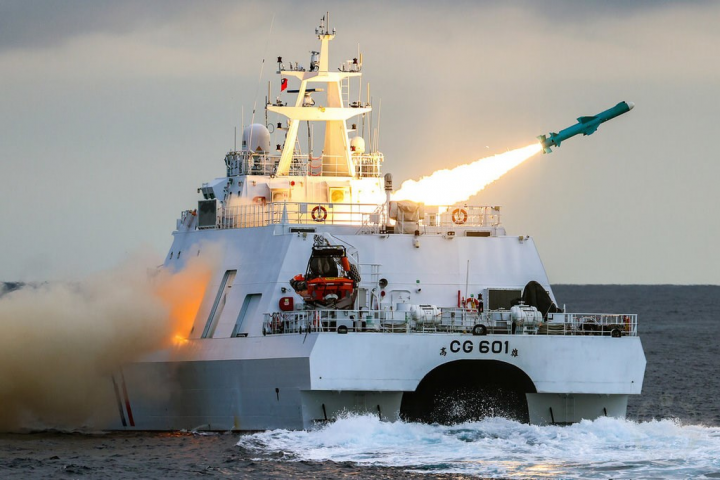
Taipei, Aug. 14 (CNA) The National Chung-Shan Institute of Science and Technology has completed several new facilities that are expected to more than double Taiwan's annual missile output to 500, according to a recent Ministry of National Defense (MND) report.
The state-run weapons developer and manufacturer was able to construct the new facilities in part thanks to a government project to procure eight domestically built weapon systems over five years.
Funding for the NT$240 billion (US$8.01 billion) project was approved by the Legislature in January this year.
Those procurement items include corvettes, shore-based anti-ship missile systems, land-based air defense missile systems, unmanned aerial attack vehicles, Hsiung Sheng missile systems, Wan Chien air-to-ground missile systems, anti-aircraft systems, and weapon systems that can be mounted on Coast Guard vessels during wartime.
With the addition of the facilities, the annual production capacity of Tien Chien "Sky Sword" II missiles will be raised from 40 to 150; Tien Kung "Sky Bow" III air defense missiles from 48 to 96; Hsiung Feng III anti-ship missiles from 20 to 70; Hsiung Feng II and Hsiung Sheng cruise missiles, which share production lines, from 81 to 131; and Wan Chien missiles from 18 to 50, according to the MND report, which was recently delivered to the Legislature.
That will bring the total number of these missiles made from 207 to 497 a year, according to the report.
The Hsiung Sheng cruise missiles, which have not begun service, are precision strike missiles intended for striking key targets and command centers, according to the MND.
The ministry added that the missiles -- which are a longer-range version of Hsiung Feng II E missiles -- have a reach of 1,000 to 1,200 kilometers and are capable of hitting China's Zhejiang, Anhui, Jiangxi provinces, as well as those in most of Hubei and Guangdong provinces, from launch sites in northern and southern Taiwan.
Meanwhile, the Wan Chien missiles are to be deployed in the northern, central, and southern parts of the nation, while shore-based anti-ship missiles are distributed in northern, central, southern, and eastern Taiwan to target the People's Liberation Army's (PLA) carrier strike groups and amphibious fleets to ensure freedoms of the air and navigation around the nation, the MND said.
Land-based air defense missiles are to be deployed in northern, central, southern, and eastern parts of the nation, as well as on outlying islands, and will be used during anti-aircraft missions, as well as anti-missile operations when needed, as a backup for MIM-104F Patriot (PAC-3) missiles, the ministry added.
Anti-aircraft defense systems, meanwhile, are to be deployed in northern, central and southern Taiwan to neutralize mid, low and ultra low-altitude incoming hostiles, the MND said.
Apart from anti-aircraft systems, which are short-range air defense systems, all the aforementioned weapon systems have a range of over 150 km.